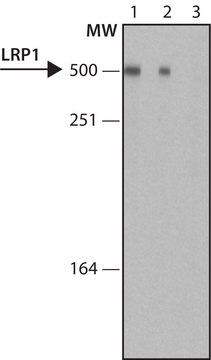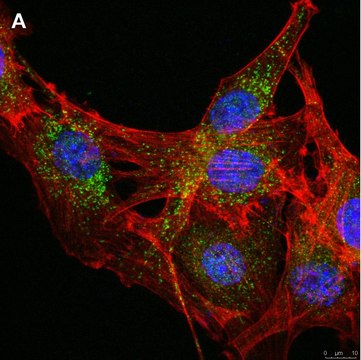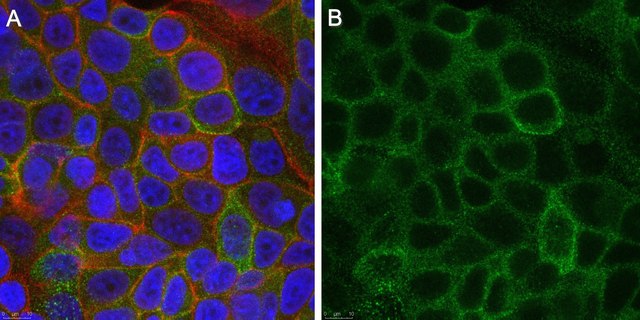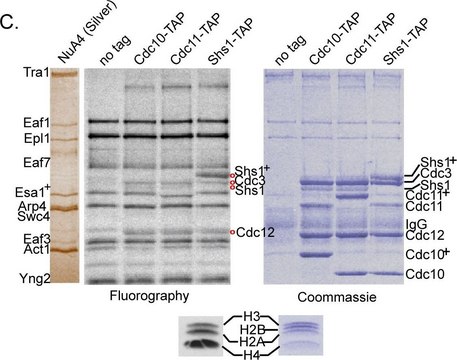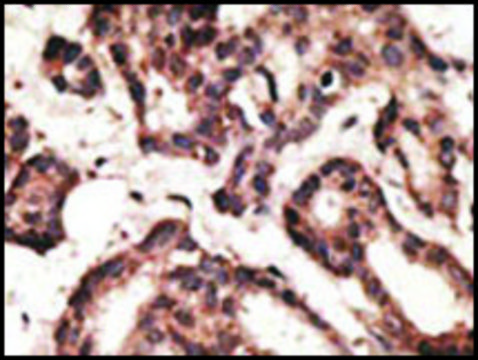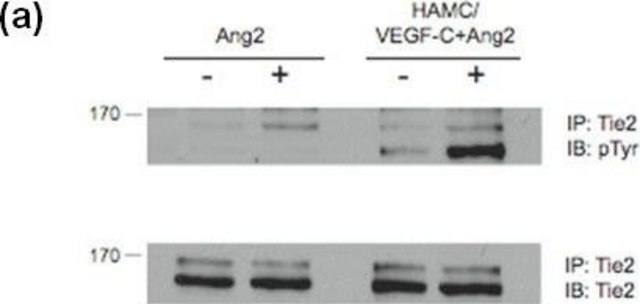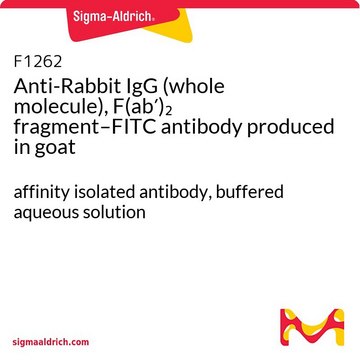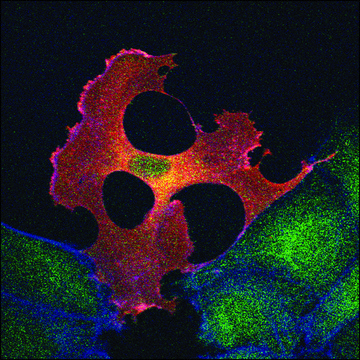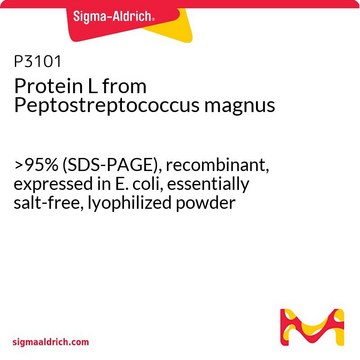一般描述
LDL receptor-related protein 1 (LRP1), also known as 2-macroglobulin receptor, is a large endocytic receptor, widely expressed on the surface and intracellular membranes of various cells. LRP1 is encoded by the gene mapped to human chromosome 12q13.3. The encoded protein is a member of the LDL receptor family. LRP1 is synthesized in the endoplasmic reticulum as a single-chain 600 kDa type I transmembrane glycosylated precursor that is cleaved subsequently in the Golgi complex into two subunits of 515 kDa and 85 kDa. The 515 kDa N-terminal subunit remains attached to the membrane through noncovalent association with the smaller 85 kDa C-terminal subunit, which contains the transmembrane and cytoplasmic domains.
特异性
Anti-LRP1 (N-terminal) recognizes human, mouse, and rat LRP1 (not tested in other species).
应用
Anti-LRP1 (N-terminal) antibody produced in rabbit has been used in immunoblotting and immunofluorescence.
生化/生理作用
LRP1 expression is essential for early embryonic development. LRP1 facilitates various biological processes including lipoprotein metabolism, proteinase regulation, lysosomal enzymes activation and entry of viruses and toxins into the cells. In addition, It also regulates cell signaling pathways, cell migration, and neurodevelopment. LRP1 has an ability to bind at least 30 different ligands such as lipoproteins, proteinases, proteinase-inhibitor complexes, extra cellular matrix (ECM) proteins and various intracellular proteins. It also binds to bacterial toxins and viruses.
外形
Solution in 0.01 M phosphate buffered saline pH 7.4, containing 15 mM sodium azide.
储存及稳定性
Store at –20 °C. For continuous use, the product may be stored at 2–8 °C for up to one month. For extended storage freeze in working aliquots at –20 °C. Repeated freezing and thawing is not recommended. If slight turbidity occurs upon prolonged storage, clarify the solution by centrifugation before use. Working dilution samples should be discarded if not used within 12 hours.
免责声明
Unless otherwise stated in our catalog, our products are intended for research use only and are not to be used for any other purpose, which includes but is not limited to, unauthorized commercial uses, in vitro diagnostic uses, ex vivo or in vivo therapeutic uses or any type of consumption or application to humans or animals.
